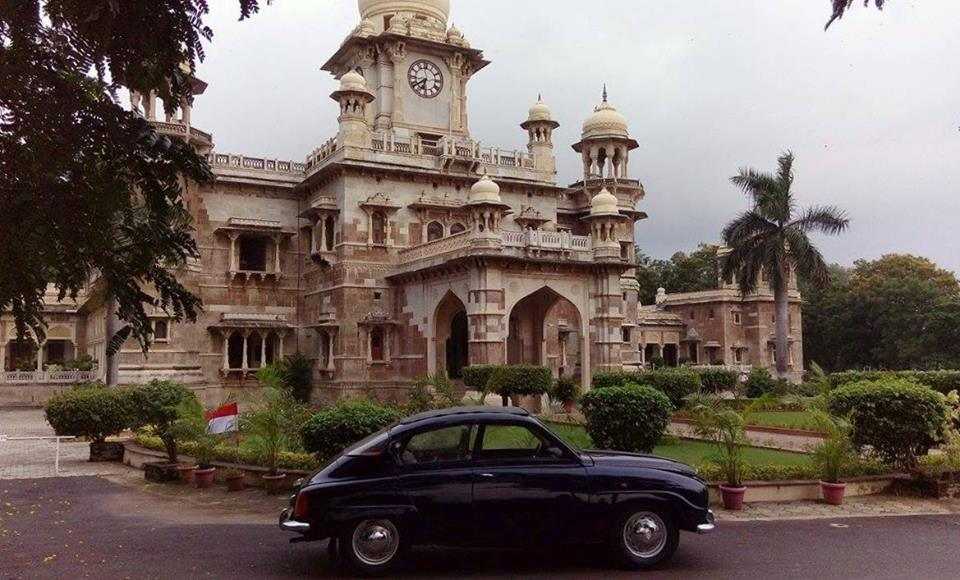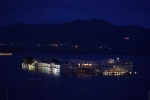"'The food city' famous for its Poha and Immarti"
Indore Tourism
The charm of this city lies in its rich cultural heritage which has been preserved over centuries and makes the hints of urbanization and commerce, here a bit more colorful and magical.
Indore has been one of the fore-runners in the development of the country in the era of modernization. With a population of over one million, Indore is the commercial capital of India. Indore has over the years established itself as the hub of trading and industrial practices in the state. But the charm of this city lies in its rich cultural heritage which has been preserved over centuries. Indore is the quintessential example of a soaring city with countless opportunities which has not lost touch with its history and heritage.
Download Indore PDF Guide >
What's Great?
A commercial and historical hotspot. A good city located in central India. Nicely connected to all parts of the country.
What's not so Great?
Congested in winters. Not a lot to do within the city for tourists.
For Whom
Ideal for tourists of every type. Suitable for backpackers from places like Bhopal, Jaipur, New Delhi etc.
Indore - A Mini Version Of Mumbai
One of the most populated cities of Madhya Pradesh, Indore is a major commercial hub, growing exactly on the same lines, as does India's major commercial capital, Mumbai. However, given the size of both the cities, Indore is aptly nicknamed Mini Mumbai. This city was once ruled by the Maratha scion of Holkars, among whom Devi Ahilya Bai Holkar has a special place in the history of India. Indore is also a major education hub, owing to the city being the seat of both IIT [Indian Institute of Technology] and IIM [Indian Institute of Management]. Very few people know that Indore is also the birth town of star cricketer Rahul Dravid, as well as Bollywood star Salman Khan, who had lived up to five years of his childhood here.
History Of Indore
Indore witnessed the conflict between the Mughals, Marathas and the British who wanted to gain domination of Central India. Located in the Malwa Region, the city of Indore was founded by Rao Nandlal Chaudhary. On his visit to the Indreshwar temple, he found the area to be sheltered and secured by natural boundaries on all sides. He established the city of Indrapur and built a fortress there. The name Indore is a change of Indrapur.
When the Marathas became powerless after they lost the third battle of Panipat to Ahmad Shah Abdali, an Afghan invader, they had to sue for peace in order to resist the British. After this, the Holkars established their rule on Indore.
The Holkar Dynasty was founded by one of the greatest warriors of his time, Maharaja Malhar Rao Holkar I. Even during the British Raj, Indore remained as the part of the Holkar Dynasty. During the Independence of India, it joined a few other Princely States and became a part of Madhya Bharat. Later, it became a part of Madhya Pradesh on November 1, 1956.
Maratha Architecture
There is very little information with respect to the architecture of the earlier period covering the rules of Shivaji, Sambhaji, Rajaram and Shahu. The prior Maratha rulers had neither the time nor the assets to indulge in such activities because of their extended wars with the Mughals. However, one can get some idea about the features of the Maratha architecture from the later built forts and buildings. The materials that were mostly used for construction were bricks, mortars and stone. The arches were made in the Deccan style, even though their use was kept to a minimum. Some of the decorative features that were commonly used were arches, stone brackets, narrow balconies that are jutting out of these brackets and shallow ceilings in the shape of domes. The Maratha design did not have the excellence and beauty of the structures of the Mughals and the Rajputs. Be that as it may, the Marathas exceeded expectations in fortification engineering. The woodwork they used to enliven their royal residences, and other common structures were intricate and minute.
Itinerary
Day 1:Reach Indore, preferably by noon, and take some rest. In the evening, you can take a stroll on the city side, particularly Sitlamata Bazar, which is famous for its retail clothing. Or if you wish to go trendy, visit the Treasure Island Mall on MG Road, Indore. Those who are ultimate foodies can prefer to gorge at Chappan Dukan, which has street food of all kinds in 56 shops!
Day 2:The next day should be earmarked for a visit to the glorious Lal Bagh Palace, which houses some exquisite artefacts right from Mughal era to the time when Holkars ruled Indore. Then, you can go for the majestic Rajwada, which has glimpses from the time of famous warrior queen, Devi Ahilya Bai Holkar. This is 3.1 km. away from the Lal Bagh Palace.
Day 3:The final day can start with blessings from Annapurna Mandir or Bada Ganpati Mandir, which has one of the biggest idols in the world of Lord Ganesha. A 39-minute drive will further take you to another site of interest in Indore, which is the Ralamandal Wildlife Sanctuary, holding some of the rarest species of flora and fauna. By the time you return from Indore, you shall leave satisfied to the core.
Restaurants and Local Food in Indore
The cuisine of Indore provides one, countless options for lip-smacking vegetarian dishes with a hint of a South-Indian influence on the food. Being a sparkling city and a unique hub of cultures in and around, this town provides one quite a variety. From the hustle-bustle of street food culture to an array of fine dining experiences, all choices here, are equally delicious. The cuisines that you will find here are Maratha, Rajasthani, Continental, Muslim and South-Indian, Bengali and Mughlai.Indore is famous forIndori Poha and Imarti. Adding to this list of essentials, you havePani Puri, Vadas, Idlis, Dosas, Sabudana Khichdi, Bhel Puri, Poha, Chaat, Kachori, Samosas, Dal Bafla, Chole Bhatureand a huge variety of traditional salty snacks calledNamkeen. There are also a number of sweets to relish such asJalebi, Malpua, Gulab Jamun, Rabri, Faluda Kulfiand more. Popular traditional beverages includeJal-Jeera and Lassi.
Read more aboutStreet Food of Indore
View 8 Restaurants in Indore >>
Jul-Maris the best time to visit Indore
October to March are the best months to visit Indore. July to September is also a good time to visit as the temperature cools down due to showers, but rains could hamper your sightseeing and travel plans. Summers must be avoided due to the scorching heat.
Weather in Indore
Loading...
Indore in Summer (April - June)
The summers are the least advisable time for a visit, owing to the scorching heat. The days are very hot; the temperatures going as high as the only 45?C and the nights are also warm.
Indore in Monsoon (July - September)
The monsoon season lasts till September. This is not exactly the best time to visit Indore, as the heavy rainfall might dampen your travel plans. However being an offseason, there is a chance that you can avail great deals on hotel tariffs.
Indore in Winter (October - March)
This is an ideal season for a visit to Indore, with pleasant climate and royal ambience waiting for your arrival. November onwards, the travel influx increases steadily as this is the peak season of travel. Although the fog drops down in December, in reality, the temperatures rarely go below zero.
Monthly Weather in Indore
Month
Avg. Minimum (°C)
Avg. Maximum (°C)
January
12
25
February
15
30
March
18
34
April
23
39
May
26
41
June
25
37
July
23
29
August
23
27
September
23
31
October
20
31
November
15
29
December
12
27
Comments on Indore
Post Your Comment


 Lal Bagh Palace
Lal Bagh Palace Rajwada
Rajwada Kanch Mandir
Kanch Mandir City Shopping
City Shopping Ujjain
Ujjain Mandu
Mandu Maheshwar
Maheshwar Udaipur
Udaipur Omkareshwar
Omkareshwar Ajanta and Ellora Caves
Ajanta and Ellora Caves